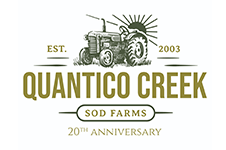
Lawn diseases are no joke. As we have discussed before, they can be incredibly difficult to treat and prevent.
Lawn diseases are no joke. As we have discussed before, they can be incredibly difficult to treat and prevent. Some examples of such diseases include brown patch, dollar spot, gray leaf, leaf spot, pythium, red thread, rust lawn, snow mold, and summer patch lawn disease. Since we’ve touched on some of these afflictions before, let’s move on and focus on others not covered before!
Dealing with Dollar Spot
Dollar spot lawn disease is a fungal problem that gets its name from its resemblance to silver dollars. These circles can spread up to six inches wide and will fuse into larger, oddly shaped blocks. Straw-yellow spots that look like water-saturated cobwebs are also signs of this fungus. Fine fescue, perennial ryegrass, bentgrass, and centipede grass are the types of lawns that are most commonly affected.
Dealing with Gray Leaf
Gray leaf is another type of fungus that you probably won’t be able to recognize. Smaller patches converge to form larger ones. The blades look bleached-out and feature dark brown edges; these spots tend to turn fuzzy gray once they get wet, which is how this lawn disease gets its name. While perennial ryegrass and tall fescue grasses are the most vulnerable, St. Augustine grass can fall victim to it as well. Relatively high temperatures along with constant precipitation during the months from spring to fall can all cause this lawn disease to develop.
Dealing with Leaf Spot
Now let’s talk about leaf spot disease. Dark brown spots attack the crowns and roots of the grass plants, which cause them to wilt, thin out, and subsequently die. Bermudagrass, Kentucky bluegrass, bentgrass, and fine fescue are common targets. Some of the problems that contribute to the development of leaf spot include high humidity, too much moisture, short mowing, and excessive amounts of high-nitrogen fertilizer, which can actually do more harm than good.
Dealing with Pythium
Many homeowners aren’t experts when it comes to lawn care or choosing the right kind of sod to make their homes even more beautiful. That’s perfectly okay because sod can be a tricky element of residential landscaping. One of the most common fungal lawn diseases around is called pythium. Withering, blackening blades are a telltale sign, as are greasy-looking leaves that stick together as the roots slowly turn brown and rot. Compacted soil, overfertilizing, and shade can all lead to this condition getting worse.
Have More Questions? Stay in Touch!
Order early, and order often to ensure the best service possible. Contact us through our online page. Find us at 27616 Little Lane, Salisbury, Maryland 21801. Our phone number is 410-726-6103, and our fax number is 410-742-6550. Speak to Jason Anderson for Turf Grass Sales. Reach him by email at jason@quanticocreeksod.com. Finally, follow us on social media on Facebook, LinkedIn, and our blog!
